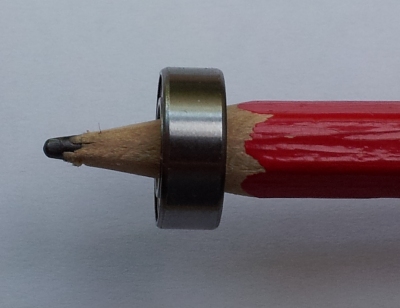Is my yoyo or spinner bearing faulty?
Posted by Pete on 19th Sep 2017
A customer emailed me to say he had a faulty yo-yo bearing. The bearing had been working ok but after a time became slow and would not spin very well: his bearing had broken! However, bearings rarely “break”, but they can become contaminated with dirt etc. For example, with a yoyo bearing, tiny fragments of response pad material can enter the bearing and stop it working efficiently.
So how do you tell if a ball bearing is faulty? The easiest way I have found is to place the bearing on the pointed end of a pencil (see photo below). Spin the bearing with your finger. It should spin freely. It should not feel rough or gritty when turning the bearing with your finger – it should feel nice and smooth. Obviously, how long the bearing spins like this will depend on the quality of the bearing, but most should be able to rotate a few times with a flick of a finger.

If the bearing is dirty it will feel rough, not spin for long, and may be noisy. In most cases performance can be greatly improved by cleaning the bearing. For information on cleaning a bearing see our yoyo help section How to clean your Yo-Yo bearing.
It is good practice to clean a bearing if the performance deteriorates. Do remember to oil the bearing after cleaning. Any very light oil will work, including sewing machine oil. For more information on oiling your bearing see Should I oil my yo-yo?.
Remember that most bearings should not be run “dry”, ie. without any oil or lubrication. Using an unlubricated bearing will cause it to wear out and its condition will deteriorate.
Could the bearing be faulty? Yes it is possible, but rare. There is actually very little that can break in a good quality bearing. In my experience most ball bearing problems result from dirt getting into the bearing.
Looked after, a good quality ball bearing should last a long time.

